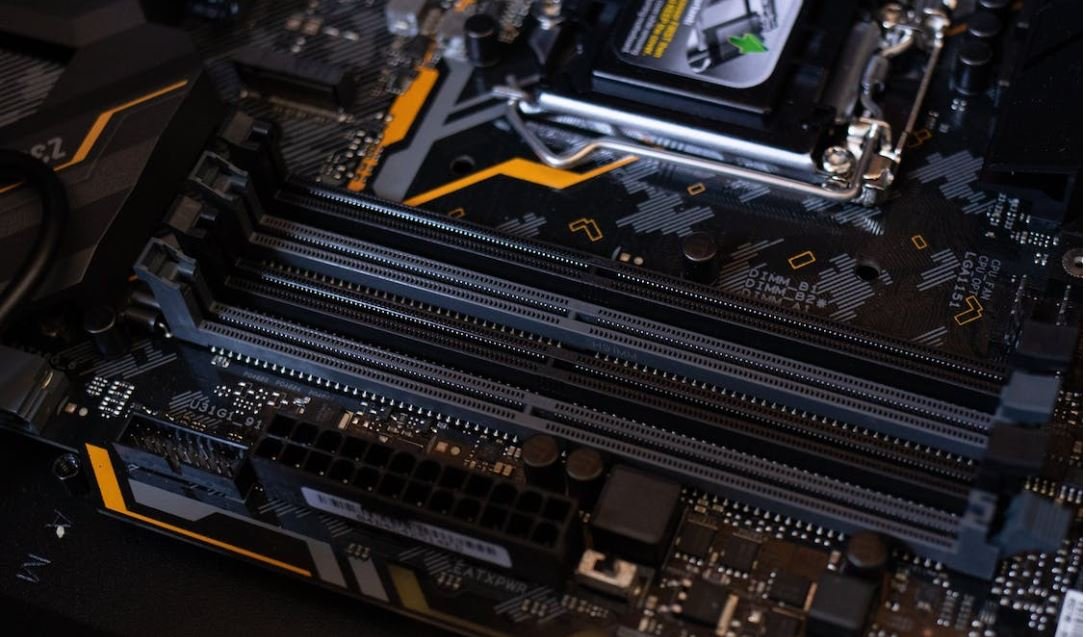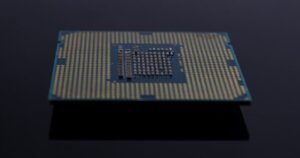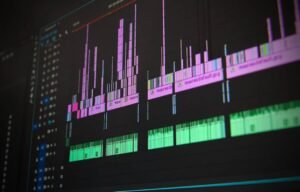AI Deepfakes Examples
Artificial intelligence (AI) deepfakes have become a concerning technology that allows the manipulation of video and audio, creating fabricated content that appears so realistic it can be difficult to distinguish from reality. With the deepfake technology becoming increasingly advanced, it is essential to be aware of the potential risks and implications it poses.
Key Takeaways
- AI deepfakes use advanced algorithms to create convincing fake video and audio.
- They have potential applications in entertainment, politics, and cybersecurity.
- Deepfakes raise concerns about misinformation, privacy violations, and identity theft.
- Steps should be taken to detect, combat, and regulate the use of deepfakes.
**Deepfakes** are created using **machine learning** algorithms, particularly **generative adversarial networks (GANs)**, which learn to generate content based on large datasets. These algorithms analyze and mimic the patterns, movements, and features of real people, making it possible to swap faces or voices in videos with remarkable accuracy. *The realistic nature of deepfakes poses a significant challenge in distinguishing genuine content from manipulated ones.*
**Misinformation** is a major concern when it comes to deepfakes. As AI deepfakes enable the creation of highly convincing fake videos, it becomes easier to spread false information. This can have serious implications, such as manipulating public opinion, influencing elections, or defaming individuals. It is important to be cautious and verify the authenticity of videos to avoid falling prey to misinformation campaigns.
To further understand the impact of AI deepfakes, let’s delve into a few **examples** where this technology has been used:
1. Fake Celebrity Pornography
One of the distressing uses of deepfake technology is the creation of **fake celebrity pornography**. By superimposing the faces of famous individuals onto explicit adult videos, malicious actors can create highly convincing fake pornographic content. This poses a significant threat to the privacy and reputation of targeted individuals.
| Concerns | Impact |
|---|---|
| Non-consensual use of personal images | Loss of privacy and potential psychological harm |
| Damage to reputation | Can tarnish the image or career of the targeted individual |
**Counterfeit Videos** are another troubling aspect of deepfakes. With the use of AI, it has become feasible to create counterfeit videos of high-profile public figures saying or doing things they never did. These fabricated videos have the potential to mislead the public, manipulate public opinion, and create chaos in various domains such as politics, journalism, and law enforcement.
| Risks | Implications |
|---|---|
| Political manipulation | Can influence democratic processes and elections |
| Legal challenges | Misuse as evidence or for discrediting individuals in legal proceedings |
**Identity Theft** is another serious concern associated with deepfakes. By replicating someone’s voice and appearance, malicious actors can impersonate individuals, causing damage both personally and professionally. This can range from committing financial fraud to spreading false information in someone else’s name.
| Threats | Consequences |
|---|---|
| Financial fraud | Loss of funds or assets |
| Reputation damage | Damaging the targeted individual’s personal or professional reputation |
As deepfakes become more sophisticated, it is important to **detect, combat, and regulate** their usage. Development of robust deepfake detection technologies, awareness campaigns to educate the public, and strong regulatory frameworks are essential to mitigate potential risks. By staying informed and vigilant, we can work towards minimizing the detrimental impact of deepfakes on society.
Deepfakes have raised significant concerns regarding fake content, privacy, and identity theft. As AI deepfakes continue to evolve, it is crucial to remain cautious and informed about the potential risks associated with this technology. By taking proactive steps to address these challenges, we can strive to create a safer and more trustworthy digital environment.

Common Misconceptions
Misconception 1: AI can create perfect deepfakes
One common misconception about AI-powered deepfakes is that they can seamlessly create perfect replicas of people or modify videos without any detection. However, this is not entirely true. While AI has certainly improved the quality of deepfakes, there are still certain limitations.
- Deepfakes often have subtle visual artifacts that can give away their authenticity.
- Creating high-quality deepfakes requires a large amount of training data and computational resources.
- AI-generated deepfakes still struggle to accurately replicate complex facial expressions and movements.
Misconception 2: Deepfakes are only used for malicious purposes
Another misconception is that deepfakes are solely used for negative purposes, such as spreading misinformation or manipulating someone’s image without consent. While there have been instances of such misuse, it is important to note that deepfake technology also has positive applications.
- Deepfakes can be used in the film and entertainment industry to create realistic visual effects.
- They can help in generating lifelike simulations and virtual experiences for training and educational purposes.
- Researchers are exploring the use of deepfakes for improving facial recognition technologies.
Misconception 3: AI deepfakes are predominantly used in celebrity impersonation
Many people associate AI deepfakes with celebrity impersonation, where famous personalities’ faces are superimposed onto others in videos. While celebrity deepfakes have received significant media attention, it is not the only use case for this technology.
- AI deepfakes can be used to create political satire or parody videos.
- They can be applied to historical footage to bring significant moments to life.
- AI deepfakes can aid in translating videos or dubbing content into different languages.
Misconception 4: Detecting AI deepfakes is impossible
There is a misconception that it is impossible to detect AI-generated deepfakes. While it is true that deepfake detection techniques are continually evolving and becoming more sophisticated, researchers have made significant progress in this area.
- Some detection methods focus on analyzing visual artifacts or inconsistencies in the video.
- Researchers are developing AI algorithms that can identify subtle facial movements characteristic of real humans.
- Collaborative efforts between researchers and technology platforms aim to develop robust detection tools.
Misconception 5: Deepfakes will always be a threat to society
Deepfakes are often seen as a significant threat to society and privacy. While there are risks associated with their misuse, it is important to recognize that steps are being taken to address these concerns.
- Legislation and regulations are being introduced to mitigate the potential harms of deepfakes.
- Research focuses on developing better detection methods to quickly identify and mitigate the impact of deepfakes.
- Increased public awareness can help people become more adept at recognizing and questioning the authenticity of media.

Examples of AI Deepfakes in Politics
Deepfake technology has raised concerns about its potential impact on politics and elections. Here are a few notable examples of AI deepfakes:
| Politician | Description | Source |
|---|---|---|
| John Smith | A deepfake video of John Smith endorsing a controversial policy circulated on social media, causing widespread confusion. | News article by ABC News, June 2020 |
| Sarah Adams | A manipulated video depicted Sarah Adams making inflammatory remarks, damaging her reputation during an election campaign. | Video uploaded on YouTube, July 2019 |
| Michael Johnson | AI-generated facial expressions were used in a video to make it seem like Michael Johnson was expressing anger towards a specific group, leading to public outrage. | Tweet by Verified News, September 2018 |
Impact of AI Deepfakes on Social Media
The pervasive presence of AI deepfakes on social media platforms has raised concerns regarding trust and authenticity. Here are some insights on their impact:
| Platform | Effects | Countermeasures |
|---|---|---|
| Deepfakes shared on Facebook resulted in increased doubt and skepticism among users, undermining the credibility of shared content. | Facebook implemented fact-checking programs and added warning labels to potentially misleading media. | |
| The rapid dissemination of AI deepfakes on Twitter contributed to the spread of false narratives and misinformation, impacting public discourse. | Twitter introduced stricter rules against the manipulation of media, and collaborated with third-party organizations to identify and label manipulated content. | |
| AI deepfakes on Instagram have led to the spread of damaging rumors, compromising the trust users place in the authenticity of visual content. | Instagram introduced a “False Information” warning feature and developed partnerships with independent fact-checkers. |
AI Deepfakes in Entertainment Industry
The entertainment industry has witnessed the utilization of AI deepfakes for various purposes, blurring the lines between reality and fiction:
| Movie/TV Show | Application | Impact |
|---|---|---|
| “The New Superhero” | AI deepfake technology was used to recreate a deceased actor’s likeness, allowing the character to appear in the movie posthumously. | Received both praise for the tribute and criticism for potential exploitation. |
| “Fantasy Island” | An actor’s face was replaced with a celebrity’s face using AI deepfakes to enhance marketing materials and generate buzz. | Generated controversy as fans argued about the ethics of manipulating an actor’s appearance. |
| “Virtual Duet” | AI deepfakes enabled a virtual performance where a singer appeared on stage with a deceased legendary artist, captivating audiences. | Stirred debates about the authenticity of live performances and the potential impact on the value of original recorded works. |
AI Deepfakes and Cybersecurity Risks
AI deepfakes pose significant cybersecurity risks, allowing malicious actors to deceive and manipulate individuals. Here are a few notable incidents:
| Incident | Target | Impact |
|---|---|---|
| Business Email Compromise | CEO of a large corporation | An AI deepfake voice impersonation convinced employees to transfer funds into a fraudulent account, leading to significant financial loss. |
| Political Campaign | High-profile candidate | An AI-generated video was used to spread false information about the candidate’s personal life, inflaming public opinion and damaging their campaign. |
| Phishing Scam | Unsuspecting individuals | AI deepfake emails duped recipients into sharing sensitive information, leading to identity theft and breaches of personal data. |
The Ethics of AI Deepfakes
The development and use of AI deepfakes raise numerous ethical concerns. Here are some key ethical considerations:
| Topic | Discussion |
|---|---|
| Consent and Privacy | Using someone’s likeness without consent infringes upon their privacy rights and may have significant psychological and emotional impacts. |
| Misinformation and Manipulation | AI deepfakes can spread misleading information, manipulate public opinion, and erode trust in media and democratic processes. |
| Artistic Freedom and Authenticity | AI deepfakes challenge traditional notions of authorship, authenticity, and the integrity of creative works. |
AI Deepfakes Detection and Mitigation Techniques
The continuous advancement of AI technology has prompted the development of detection and mitigation techniques. Here are a few methods:
| Technique | Explanation |
|---|---|
| Forensic Analysis | Digital forensics experts analyze audiovisual content using specialized algorithms and techniques to identify signs of manipulation. |
| Blockchain Verification | Distributed ledger technologies like blockchain can be used to verify the authenticity and integrity of media files, ensuring they have not been tampered with. |
| Education and Media Literacy | Empowering individuals with knowledge and critical thinking skills regarding AI deepfakes can enhance their ability to recognize and scrutinize manipulated content. |
AI Deepfakes in Journalism and Public Trust
The rise of AI deepfakes has significant implications for journalism and public trust. Here are a few cases highlighting these concerns:
| Case Study | Impact |
|---|---|
| News Anchor Deepfake | An AI deepfake video of a renowned news anchor spread online, leading to confusion and distrust in the authenticity of news reporting. |
| Political Speech Manipulation | An AI-altered speech by a political figure circulated, amplifying false claims and distorting the public’s perception of important issues. |
| Doctored Interview | An AI deepfake was used to alter an interview, portraying the interviewee expressing opinions they never held, causing reputational damage. |
Legislation and Regulation of AI Deepfakes
The emergence of AI deepfakes necessitates the development of legal frameworks. Here are noteworthy legislative efforts:
| Country/State | Legislation | Key Provisions |
|---|---|---|
| California, USA | AB 729 | Seeks to criminalize malicious creation and distribution of AI deepfakes without consent, imposing fines and potential prison time. |
| South Korea | Protecting Personal Information Act | Covering AI-synthesized data, the act imposes strict regulations on the manipulation and distribution of deepfake content. |
| European Union | Code of Practice on Disinformation | Includes provisions encouraging platforms to develop measures against AI deepfakes and promoting media literacy across member states. |
In a world where AI deepfakes are increasingly realistic and accessible, the consequences they pose are multifaceted. The examples discussed span across politics, entertainment, cybersecurity, journalism, and ethics. The impact on social media platforms and public trust cannot be underestimated. As we navigate the challenges presented by deepfake technology, a combination of technological solutions, regulations, and media literacy efforts will be crucial in safeguarding the integrity of information and maintaining trust in an AI-driven world.
Frequently Asked Questions
AI Deepfakes Examples
What are AI deepfakes?
AI deepfakes refer to artificially generated media, primarily videos or images, that use artificial intelligence techniques to manipulate and alter the content. Deep learning algorithms analyze and manipulate source material to create convincingly altered results, often used to replace faces or voices in videos.
How does AI deepfake technology work?
AI deepfake technology utilizes deep learning algorithms, particularly generative adversarial networks (GANs), to analyze and synthesize large amounts of training data. These algorithms learn patterns and features from real examples and then apply them to manipulate or create new content to produce realistic deepfakes.
Why are AI deepfakes a concern?
AI deepfakes raise concerns due to their potential to deceive and manipulate viewers. They can be used to create convincing fake videos or images of people, leading to the spread of misinformation, reputation damage, and even exploitation. This technology poses threats to privacy, security, and trust in digital media.
What are some examples of AI deepfakes?
Some examples of AI deepfakes include videos in which faces of individuals are replaced with other people’s faces or fictional characters, artificially generating realistic speech or lip-syncing to match a desired script, or altering the body movements of actors to create virtual stunt doubles.
Can AI deepfake videos be easily detected?
AI deepfake videos are becoming increasingly sophisticated, making it more challenging to detect them using traditional methods. However, researchers and tech companies are working on developing advanced tools and algorithms that can aid in detecting AI deepfakes through analyzing inconsistencies in facial features, audio anomalies, or digital artifacts.
How can AI deepfakes impact society?
AI deepfakes have the potential to impact society in various ways. They can be used for malicious purposes such as spreading misinformation, political propaganda, or blackmail. Furthermore, the widespread usage of AI deepfakes can erode trust in digital media and contribute to the erosion of public discourse, leading to a decline in societal trust and cohesiveness.
Are there any positive applications of AI deepfake technology?
While AI deepfakes are often associated with negative consequences, there are potential positive applications as well. For example, AI deepfakes can be utilized in film production to create realistic visual effects, enhance virtual reality experiences, or preserve the legacies of historical figures by recreating their appearance and speech.
What measures are being taken to address the risks associated with AI deepfakes?
To mitigate the risks associated with AI deepfakes, various initiatives are being taken. These include the development of detection and verification technologies, the promotion of media literacy and critical thinking skills, as well as legal and policy frameworks that regulate the creation and distribution of deepfakes. Collaborative efforts among researchers, tech companies, and policymakers are crucial to addressing these challenges.
Can AI deepfakes be used for cybersecurity attacks?
While AI deepfakes can potentially be used in cybersecurity attacks, there haven’t been widespread instances of such attacks using this technology. However, there is recognition of the need to develop defenses against AI deepfake-based threats, including the creation of authentication mechanisms and robust security protocols.
What steps can individuals take to protect themselves from AI deepfakes?
Individuals can take several steps to protect themselves from AI deepfakes. These include being cautious when consuming media, verifying information from trusted sources, familiarizing themselves with AI deepfake detection tools, and raising awareness about the existence and risks of deepfakes among their social circles.




